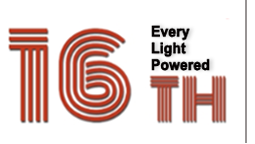- Product
- Technical data
- Resource
The hardness of optical crystal that provides the basis for the brilliant cuts and bevels, as well as the ultra high polished surfaces. Each piece of Optic Crystal is hand polished and beveled. Optical /Optic Crystal, as clear and as flawless as used in binoculars and camera lenses, represents the ultimate expression of excellence. Optical Crystal is manufactured in large sheets up to 3" thick, and while still molten, is subjected to tremendous pressure to ensure no bubbles, flow lines or other distortions. Rising EO could do the optical crystal as follow:
Infra-red (IR) materials, optically transmissive at wavelengths greater than approximately 1 micron, are integral to a variety of devices and applications. These applications include lidar, thermal imaging, military countermeasures, spectroscopy, biomedical research and remote sensing (including environmental monitoring and the detection of biological agents). Rising EO afford cold processing and coating of IR material. Essential to the enhanced performance of any IR material or device are our custom- designed antireflection (AR) coatings. Our major processing IR material as follow:
вЧП Silicon
Usually we are handling Silicon monocrystalline, CZ and FZ, optical and mirror grade.
Silicon (Si) is grown by Czochralski pulling techniques (CZ) and contains some oxygen that causes an absorption band at 9 microns. To avoid this, material can be prepared by a Float-Zone (FZ) process. Optical silicon is generally lightly doped (5 to 40 ohm cm) for best transmission above 10 microns, and doping is usually boron (p-type) and phosphorus (n-type). After doping silicon has a further pass band: 30 to 100 microns which is effective only in very high resistivity uncompensated material.
CZ Silicon is commonly used as substrate material for infrared reflectors and windows in the 1.5 - 8 micron region. The strong absorption band at 9 microns makes it unsuitable for CO2 laser transmission applications, but it is frequently used for laser mirrors because of its high thermal conductivity and low density. Application as window, lens in the 1.5 - 8 ќЉm region; Mirror for CO2 laser and spectrometer applications.
вЧП Germanium
Germanium (Ge) is the preferred lens and window material for high performance infrared imaging systems in the 8вАУ12 ќЉm wavelength band. Its high refractive index makes Ge ideal for low power imaging systems because of minimum surface curvature. Chromatic aberration is small, often eliminating the need for correction.
вЧП Calcium Fluoride
Calcium Fluoride (CaF2) single crystal is an optical material with high transmittance in ultraviolet, visible and infrared regions of the spectrum: 0.15 ќЉm ~ 9 ќЉm range. Calcium Fluoride is widespread used for optical windows, lenses and prisms in the IR application; especially pure grades find useful application in the UV and as UV Eximer (High power applications) laser windows.
вЧП Magnesium Fluoride
Magnesium Fluoride (MgF2) transmits well into the VUV region at the hydrogen Lyman-alpha line (121nm) and beyond. Application as window, lens, in most VUV region optics and is excellent for excimer laser use.
вЧП Sapphire
Single crystal Sapphire possesses a unique combination of excellent optical, physical and chemical properties, the most useful is that it is the hardest of the oxide crystals. Sapphire maintains its strength even at high temperatures. It has good thermal properties, excellent electrical and dielectric properties, and is chemically resistant to common acids and alkali at temperatures up to 1000вДГ as well as to HF below 300вДГ.
Tel: +86-591-83597829
+86-591-83349016
Fax: +86-591-83300646
Web: www.rising-eo.com
E-mail: sales@rising-eo.com
Add: Bldg 24#, Jinshan Fuwan Industrial Park, No.869, Pan Yu Road, Fuzhou 350002, China
 |